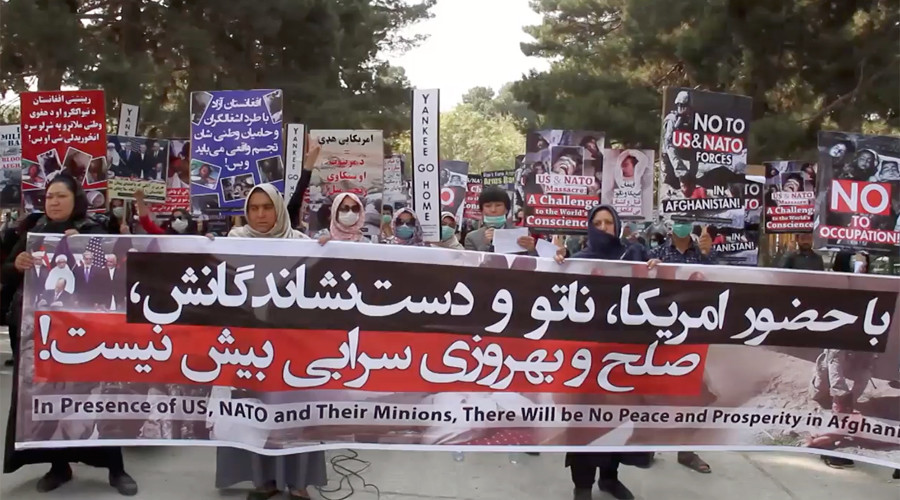Hundreds took to the streets, shouting anti-American and anti-NATO slogans. Protesters carried banners in both English and local languages, reading “Yankees go home.”
US troops invaded Afghanistan on 7 October, 2011 allegedly to fight terrorism, following the 9/11 attacks and the promise of vengeance aimed at the Taliban, hosts of al-Qaida and Osama bin Laden. The 16-year stay in the country became the longest war in US history, in which over 2,400 American troops have been killed, according to official figures.
However, according to the UN, they have been the Afghan civilians who have been paying the highest price for the conflict, during which thousands have died. The civilian death toll has reached record numbers this year, with 1,662 killed in the first half of 2017 alone, according to UN Assistance Mission in Afghanistan (UNAMA).
UNAMA also noted an increase in civilian casualties, especially among women and children, from US and Afghan airstrikes, saying that it documented 95 civilian deaths and 137 injuries in such operations.
During his visit to Kabul in September, US Defense Secretary James Mattis announced a boost of almost 4,000 more troops to the American military contingent, which would bring the total number of NATO troop in Afghanistan to over 17,000.
The longest war in modern US history reached its 16th anniversary on Saturday, and so far there is no end in sight. The Pentagon recently disclosed that the actual number of US troops currently in Afghanistan is 11,000—significantly higher than previously acknowledged. The announcement came just days after President Donald Trump announced an open-ended escalation of the war.
Recent reports suggest that, Trump is eyeing Afghanistan’s mineral wealth to help pay for a 16-year war.
Afghanistan has natural resources estimated to have a potential value of over $3 trillion and many analysts believe that this is the major reason for continued presence of US-led occupation troops in the country. Plundering Afghanistan’s natural wealth has always been a priority number one of Western countries led by the US
As well as deposits of gold, silver and platinum, Afghanistan has significant quantities of iron ore, uranium, zinc, tantalum, bauxite, coal, natural gas and significant copper.
Afghanistan also has deposits of the raw material used in phone and electric car batteries.
US officials, speaking on condition of anonymity, say that Trump argued at a White House meeting with advisors in July that the US should demand a share of Afghanistan’s mineral wealth in exchange for its assistance to the Kabul government.
The Taliban militants are meanwhile saying that the group is not tired of war as the US-led invasion that toppled the regime of the group has entered to its seventeenth year.
The group in a statement claimed that they represent the Afghan nation and call on the American forces to withdraw.
The group has not mentioned anything regarding the repeated calls by the government and international community to participate in peace talks.
Meanwhile, the estimated opium production in Afghanistan has increased nearly 25 times since 2001, reaching 4,800 tons last year, according to UN estimates.
Afghanistan produces over 70 percent of the global supply of heroin that represents a sizeable fraction of the global narcotics market, estimated by the UN to be of the order of $400-500 billion.
Some pundits believe the US, through the CIA, is instrumental in supporting this highly profitable multibillion-dollar trade, third in commodity value after oil and the arms trade.
/106

